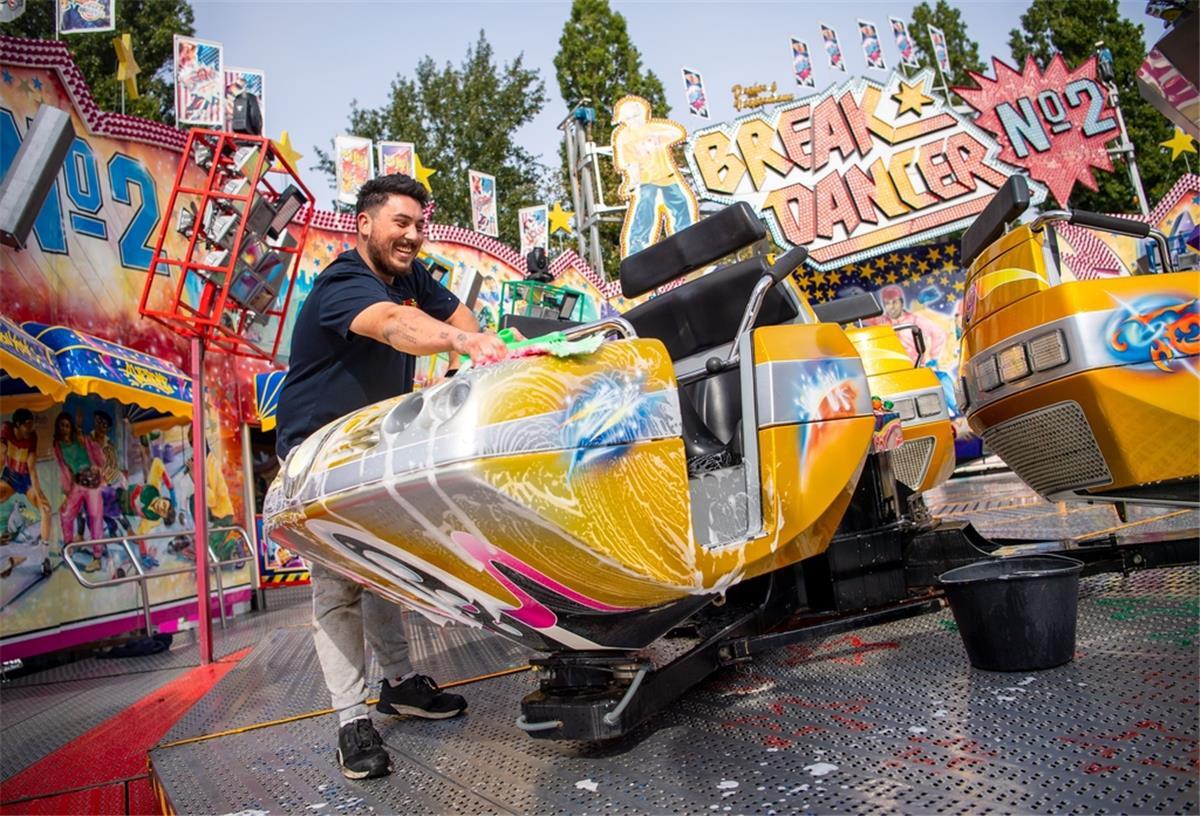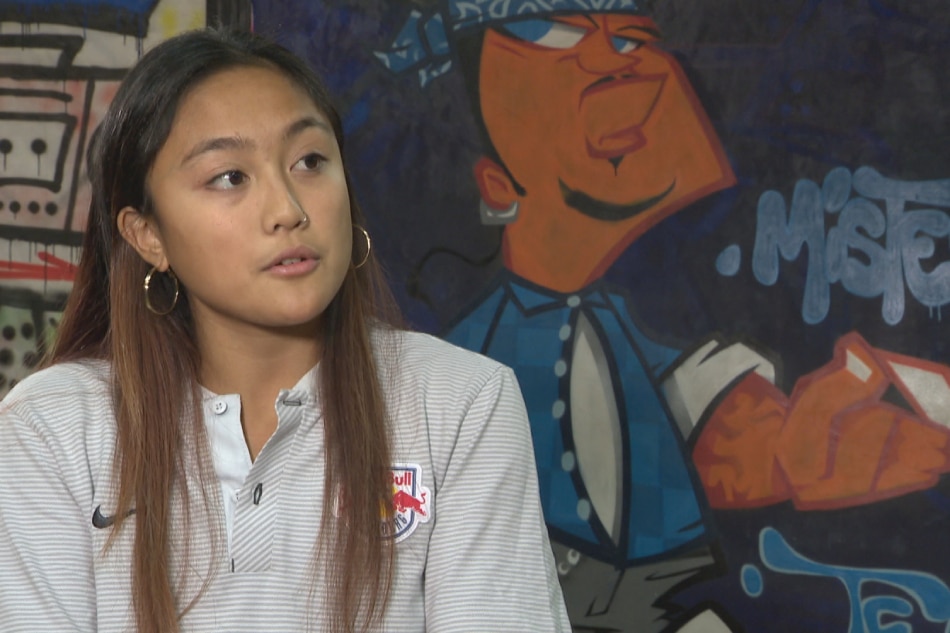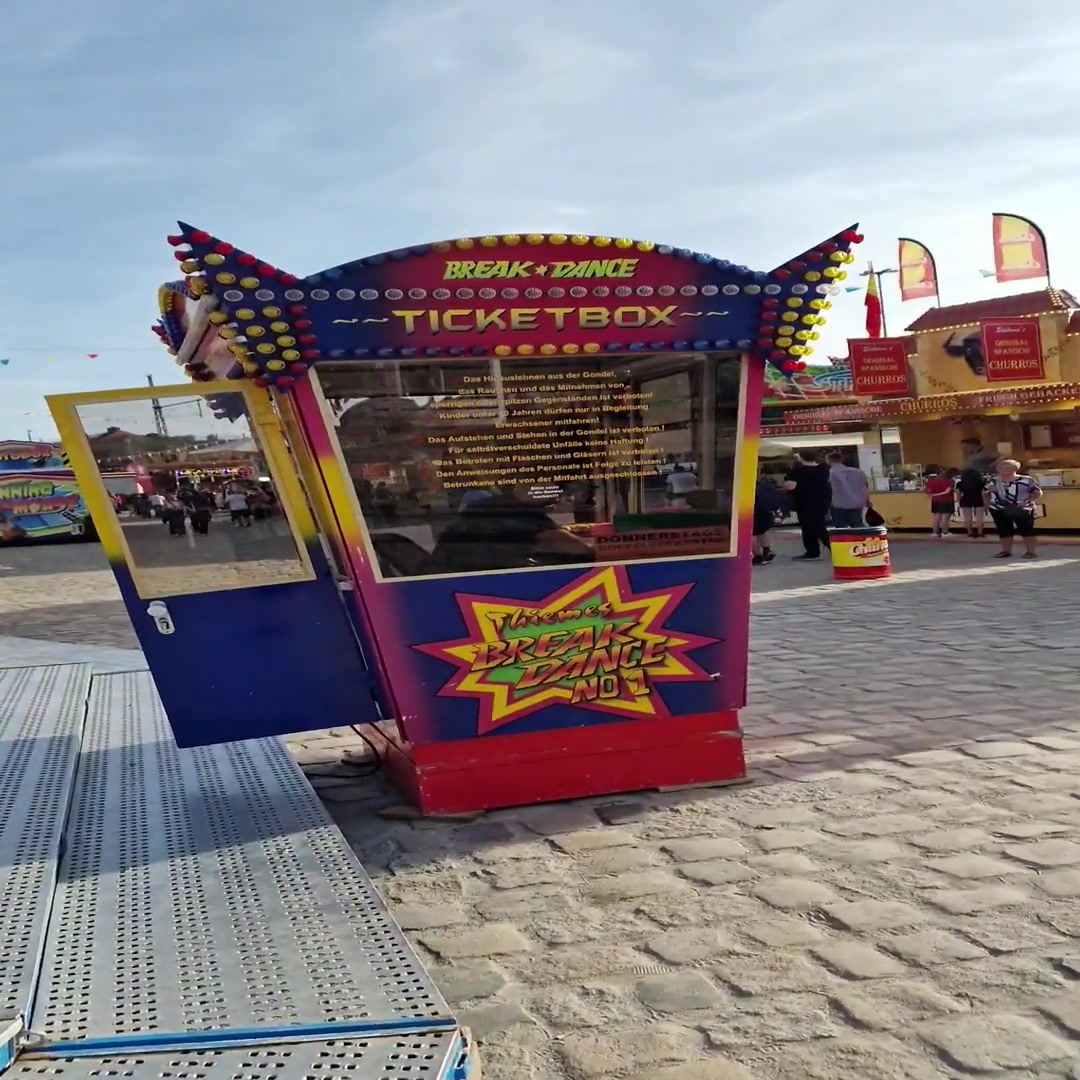History and Evolution of Breakdancing: Ami Breakdancer

Breakdancing, a vibrant and energetic dance form, has its roots in the 1970s Bronx, New York. It emerged as a cultural expression within the African American and Latino communities, reflecting the social and economic realities of the time. Breakdancing’s evolution has been a journey of innovation, adaptation, and global recognition, showcasing its powerful influence on contemporary dance and urban culture.
Origins of Breakdancing
Breakdancing emerged in the 1970s in the South Bronx, New York, during a period of significant social and economic change. The Bronx, once a thriving industrial area, was experiencing high unemployment, poverty, and social unrest. The streets became a canvas for young people to express themselves through music, dance, and art. Breakdancing, born from this environment, became a powerful symbol of resilience and creativity.
- Block Parties: Breakdancing found its early roots in block parties, gatherings held in the streets, where DJs played funk, soul, and disco music. These parties provided a space for young people to gather, socialize, and express themselves.
- Turntablism: The development of turntablism, a technique that involves manipulating records on a turntable to create unique sounds and rhythms, played a crucial role in shaping breakdancing. DJs like Kool Herc and Grandmaster Flash innovated turntablism, creating rhythmic breaks in the music that became the foundation for breakdancing.
- The “B-Boy” and “B-Girl” Culture: The term “B-Boy” emerged in the 1970s, referring to young men who embraced the breakdancing culture. The term later evolved to include “B-Girl,” recognizing the significant role of women in breakdancing.
Key Influences and Cultural Contexts
The development of breakdancing was influenced by a confluence of cultural factors, including music, dance, and social movements.
- Funk and Disco: The infectious rhythms of funk and disco music provided the soundtrack for breakdancing, inspiring the dynamic and energetic movements. Artists like James Brown, Sly and the Family Stone, and Chic influenced the style and energy of breakdancing.
- Martial Arts: Martial arts, particularly capoeira, a Brazilian martial art that incorporates dance-like movements, influenced the power, precision, and athleticism of breakdancing.
- African American Dance Traditions: Breakdancing drew inspiration from African American dance traditions, such as tap dancing and street dancing, which emphasized rhythmic footwork and improvisational skills.
- Hip Hop Culture: Breakdancing is an integral part of hip hop culture, a movement that emerged in the 1970s, encompassing music, dance, art, and social consciousness. Breakdancing, alongside rapping, DJing, and graffiti art, became a powerful form of expression and identity for young people in the Bronx and beyond.
Evolution of Breakdancing Styles and Techniques
Breakdancing has evolved significantly over time, with new styles and techniques emerging, reflecting the creativity and innovation of B-Boys and B-Girls.
- Early Styles: Early breakdancing styles focused on dynamic footwork, acrobatic moves, and rhythmic body isolations.
- Power Moves: In the 1980s, power moves, such as headspins, windmills, and flares, became popular, showcasing the strength and athleticism of B-Boys and B-Girls.
- Top Rock: Top rock, a style that incorporates rhythmic footwork and body movements, developed as a way to transition between power moves and other breakdancing elements.
- The “Golden Age” of Breakdancing: The 1980s witnessed a “Golden Age” of breakdancing, with the emergence of iconic B-Boys and B-Girls, the rise of breakdancing competitions, and the widespread popularity of the dance form.
- Breakdancing in the 21st Century: Breakdancing continues to evolve in the 21st century, with new styles and techniques emerging, influenced by contemporary dance, urban culture, and global trends.
Comparison of Breakdancing Styles
Breakdancing encompasses a variety of styles, each with its unique characteristics and techniques.
- B-Boying: B-Boying is the most widely recognized style of breakdancing, characterized by its dynamic footwork, acrobatic moves, and power moves.
- Popping: Popping involves a series of quick, sharp movements, creating an illusion of “popping” or “locking” the body.
- Locking: Locking, similar to popping, involves a series of quick, precise movements, but with a more fluid and stylized approach.
- Other Styles: Breakdancing also includes other styles, such as tutting, which involves creating shapes and patterns with the hands and fingers, and animation, which incorporates exaggerated movements and facial expressions.
The Art and Technique of Breakdancing

Breakdancing, also known as b-boying or b-girling, is a vibrant and expressive street dance form that has evolved into a global phenomenon. Its unique blend of athleticism, artistry, and musicality continues to captivate audiences worldwide. Understanding the art and technique of breakdancing requires delving into its fundamental elements, including footwork, spins, power moves, and freezes.
Fundamental Elements of Breakdancing
Breakdancing encompasses a wide range of intricate moves that require a high level of physicality, coordination, and creativity. The four core elements of breakdancing are:
- Footwork: Footwork is the foundation of breakdancing, characterized by intricate and rhythmic foot patterns. It involves a variety of steps, such as the six-step, the turtle, and the baby freeze, executed with precision and speed. Footwork serves as the base for other breakdancing moves and allows dancers to transition seamlessly between different styles.
- Spins: Spins are a hallmark of breakdancing, adding a dynamic and visually captivating element to the dance. There are numerous spin variations, each requiring specific techniques and body control. Some common spins include the windmill, the flare, and the headspin. The ability to spin gracefully and control one’s body during rotations is essential for breakdancing.
- Power Moves: Power moves are the most physically demanding aspect of breakdancing, involving explosive movements and acrobatic feats. They require immense strength, agility, and coordination. Popular power moves include the backspin, the headspin, the airtrack, and the flare. Power moves often involve a combination of footwork, spins, and body contortions, creating a visually impressive spectacle.
- Freezes: Freezes are static poses that breakdancers hold for a brief period, showcasing their strength, balance, and flexibility. They serve as a transition between different moves and allow dancers to highlight their creativity and artistic expression. Common freezes include the handstand, the chair freeze, and the scorpion freeze.
Physical and Mental Training
Breakdancing requires a high level of physical fitness and mental discipline. Here’s a breakdown of the training aspects:
- Physical Training: Breakdancers need to be strong, flexible, and agile. This requires a comprehensive training regimen that includes:
- Strength Training: Building upper body strength, core strength, and leg strength is crucial for executing power moves, spins, and freezes. Exercises like push-ups, pull-ups, squats, and lunges are essential.
- Flexibility Training: Stretching and flexibility exercises are vital for preventing injuries and improving range of motion. Yoga, Pilates, and dynamic stretching can enhance flexibility.
- Cardiovascular Training: Breakdancing is physically demanding, requiring good cardiovascular fitness. Running, jumping rope, and high-intensity interval training (HIIT) can improve stamina and endurance.
- Mental Training: Breakdancing is not just about physical skill but also mental focus and determination. Mental training includes:
- Focus and Concentration: Breakdancing requires intense concentration and focus to execute complex moves accurately and maintain rhythm.
- Mental Toughness: Overcoming fear of heights, injuries, and self-doubt is crucial for pushing boundaries and progressing in breakdancing.
- Creativity and Expression: Breakdancers need to express themselves creatively through their movements, incorporating their own unique style and flair.
Importance of Rhythm, Timing, and Musicality
Rhythm, timing, and musicality are integral to breakdancing. These elements are essential for creating a cohesive and captivating performance.
- Rhythm: Breakdancing is deeply rooted in rhythm. Dancers must be able to feel the beat and interpret the musical cues, translating them into fluid and expressive movements.
- Timing: Precise timing is essential for executing moves accurately and creating a visually appealing performance. Breakdancers need to be able to anticipate the beat and synchronize their movements with the music.
- Musicality: Musicality is the ability to interpret and respond to the music in a meaningful way. Breakdancers use their movements to tell a story, express emotions, and create a dialogue with the music.
Learning Basic Breakdancing Moves
Learning breakdancing requires patience, persistence, and a willingness to practice. Here’s a step-by-step guide for beginners:
- Warm-up: Begin with a thorough warm-up, including stretching, dynamic movements, and light cardio to prepare your body for the demands of breakdancing.
- Footwork Basics: Start by learning basic footwork patterns, such as the six-step and the turtle. Focus on mastering the steps before moving on to more complex combinations.
- Simple Spins: Once you have a solid foundation in footwork, begin practicing simple spins, such as the windmill or the flare. Start slowly and gradually increase speed and control.
- Basic Freezes: Learn basic freezes, such as the handstand or the chair freeze. Focus on balance and control, and gradually work on variations and transitions.
- Practice and Repetition: Consistent practice is key to improving your breakdancing skills. Practice each move repeatedly, focusing on technique and precision.
- Find a Teacher or Class: Learning from a qualified instructor can accelerate your progress and provide valuable feedback. Join a breakdancing class or find a private teacher to guide your learning journey.
Breakdancing in Popular Culture and Society

Breakdancing, a vibrant and energetic dance form, has transcended its origins as a street art to become a powerful force in popular culture and society. From its early days in the Bronx, breakdancing has captivated audiences worldwide, influencing fashion, music, and other cultural trends, and playing a significant role in promoting diversity, inclusion, and community.
Breakdancing in Film and Music
Breakdancing’s impact on film and music is undeniable. Its explosive energy and intricate moves have graced countless movies, television shows, and music videos. Some notable examples include:
- “Breakin'” (1984): This groundbreaking film showcased the electrifying world of breakdancing, featuring the iconic Rock Steady Crew and introducing the dance to a wider audience.
- “Beat Street” (1984): This film, set against the backdrop of hip-hop culture in New York City, further cemented breakdancing’s place in popular culture, highlighting its connection to music and urban life.
- “Flashdance” (1983): While not solely focused on breakdancing, this film featured a memorable scene with a breakdancing crew, showcasing the dance’s growing popularity and its appeal to a broader audience.
- Michael Jackson’s “Thriller” (1983): This iconic music video featured a groundbreaking breakdancing sequence, showcasing the dance’s ability to enhance music videos and captivate audiences.
- “The Fresh Prince of Bel-Air” (1990-1996): This popular sitcom featured several episodes with breakdancing scenes, highlighting the dance’s continued presence in popular culture and its ability to entertain a diverse audience.
Breakdancing’s Influence on Fashion and Art
Breakdancing has significantly impacted fashion and art, creating unique styles and influencing visual aesthetics.
- Fashion: Breakdancers have developed a distinct fashion sense, characterized by loose-fitting clothing, sneakers, and accessories that allow for freedom of movement. The iconic “B-boy” style, with its baggy pants, oversized shirts, and bold colors, has become a symbol of breakdancing culture and has influenced mainstream fashion trends.
- Art: Breakdancing has inspired various forms of art, including street art, graffiti, and visual arts. The dynamic and expressive nature of breakdancing translates well into visual mediums, capturing the energy and movement of the dance.
Breakdancing’s Role in Promoting Diversity and Inclusion
Breakdancing has played a vital role in promoting diversity, inclusion, and community. Its origins in the Bronx, a diverse and multicultural neighborhood, reflect the dance’s inherent ability to bring people from different backgrounds together.
- Community Building: Breakdancing has created a strong sense of community among its practitioners. Crews, or groups of dancers, provide a platform for shared experiences, mentorship, and support. The collective spirit of breakdancing fosters a sense of belonging and encourages collaboration.
- Cultural Exchange: Breakdancing has facilitated cultural exchange by bringing together people from different backgrounds and countries. International competitions and events provide opportunities for dancers to showcase their skills, learn from each other, and share their unique cultural expressions.
- Empowerment: Breakdancing has empowered individuals, particularly from marginalized communities, by providing a platform for self-expression and creativity. The dance offers a way to overcome adversity, build confidence, and challenge societal norms.
Prominent Breakdancing Crews and Their Contributions, Ami breakdancer
| Crew Name | Location | Contributions |
|---|---|---|
| Rock Steady Crew | New York City, USA | One of the most influential breakdancing crews, known for their innovative moves and pioneering role in popularizing the dance. |
| The Furious Five | New York City, USA | A legendary crew known for their energetic performances and their influence on the development of breakdancing techniques. |
| The Magnificent Force | New York City, USA | A highly skilled crew known for their intricate footwork and acrobatic moves. |
| The Floorlords | Los Angeles, USA | A prominent crew known for their innovative style and their contributions to the development of power moves. |
| Squadron | Paris, France | A renowned European crew known for their technical prowess and their influence on the international breakdancing scene. |
Ami breakdancer, spinning and popping with energy! It’s amazing how much talent runs in families, just like with actor Colin Farrell’s son , who’s also making waves in the entertainment world. Seeing all this youthful talent inspires me to keep pushing my own dance moves, just like a good song keeps you movin’ and groovin’!
Ami breakdancer, selalu semangat joget diiringi musik yang ngebeat! Tapi ternyata, olahraga lain juga seru banget, kayak sport climbing. Liat deh, sport climbing combined olympics video ini, nggak kalah keren dari breakdance! Kalo liat atletnya ngeluarin tenaga dan strategi, semangat ami buat ngelatih breakdance jadi makin tinggi!
